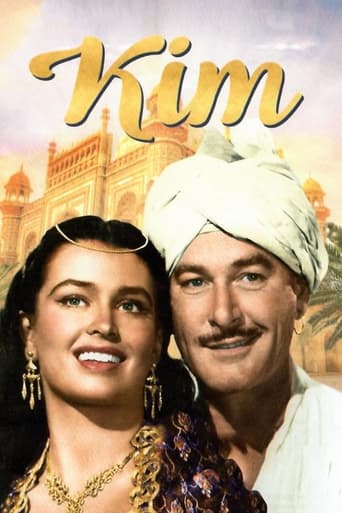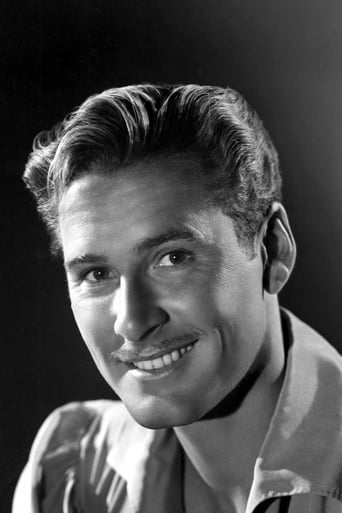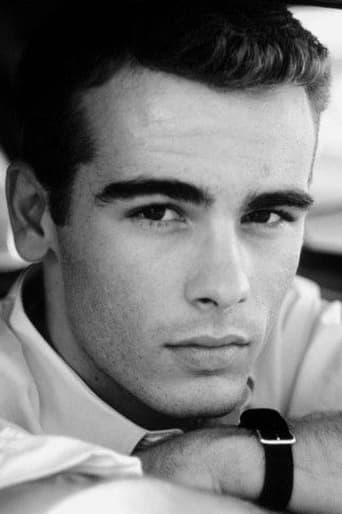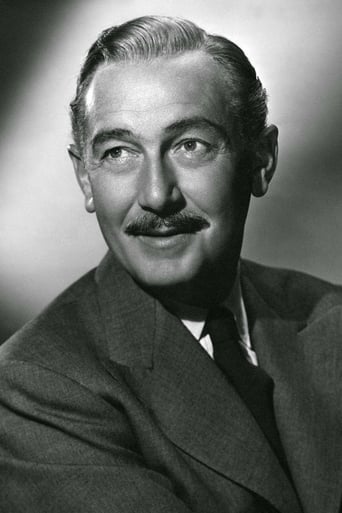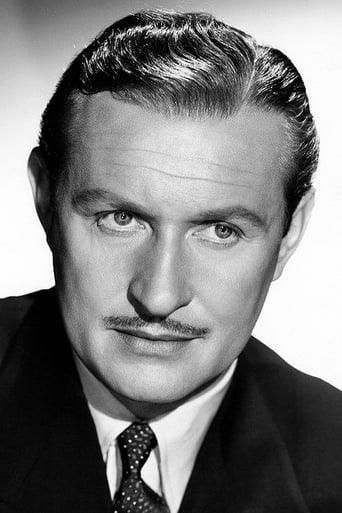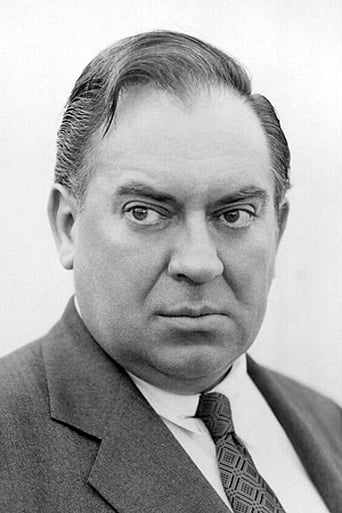Scanialara
You won't be disappointed!
Interesteg
What makes it different from others?
ReaderKenka
Let's be realistic.
PiraBit
if their story seems completely bonkers, almost like a feverish work of fiction, you ain't heard nothing yet.
Spikeopath
Out of MGM, Kim is directed by Victor Saville and adapted from the Rudyard Kipling novel by Helen Deutsch, Leon Gordon (producer as well) and Richard Schayer. It stars Errol Flynn, Dean Stockwell, Paul Lukas & Robert Douglas. It's shot in Technicolor by William V. Skall and André Previn provides the musical score. Locations for the shoot were Rajasthan and Uttar Pradesh, India, and some work was done at Alabama Hills near Lone Pine in California.It's all very colourful, with performances from the cast to match, and the photography is at times gorgeous, but excitement is sporadic and threaded together by long periods of tedium. The story is a good one, tho the political correctness brigade would like to see the film given a Viking burial. Set during the British Raj, it tells how a young orphan boy named Kim (Stockwell) had adventures whilst becoming a spy for the Empire. The people he meets, good and bad, and his involvement with a Russian plot to seize India. Stockwell does very well in the lead role, and Flynn offers up some flamboyance. But it's ultimately too long at nearly two hours because the narrative is far too episodic. 4/10
greens-10
A reviewer says that Kim is half Indian. That is not the case, he is wholly British.The ending of the Kipling's novel is ambiguous - does Kim go fully "native" and live an Indian spiritual life or does he become fully a Briton or does he continue moving to and fro in both worlds? The general feeling is that Kipling infers that he permanently becomes as an Indian. He remains a disciple of the Lama and continues on immersed in a spiritual life on the lama's death. There is a great opportunity for a sequel here, both as a novel and as a film.Generally the reviewers get it right. The movie is tedious and although much of the film was shot in India it fails to capture the excitement and action of India, especially when depicting life on the road, which is one of the most intriguing elements of the book.
xcelsiorus
More swings than hits in this 1950 Hollywood "adaptation" of Kipling's masterpiece. Mahbub Ali may have been a perfect Flynn role, but making him the hero of the piece in place of Kim himself and Hurree Babu -- gratuitously killed off, as is the old lama Kim follows, loves and learns from -- leaves out the crisis of identity Kipling's Kim must face, the central theme of the book. Also missing are Kipling's picturesque vistas of the India he knew and recalled so well, scenes he paints with words easily surpassing all the Technicolor location shots. One who has read and appreciated the book on all of its many levels will also miss its many memorable and important "minor" characters; its sensitive and sympathetic treatment of Buddhism and other non-Christian creeds; and will be left wondering whether it was the star, the writers, the producer, the director or some combination of the above who thought they could go Kipling one better by, among other things, replacing his almost-accidental crisis with a Flynn-caused avalanche, then neatly tying all his lifelike loose ends into a big Tinseltown bow. Three stars because it's probably the best job they could have done with it at the time -- sad to say.
Igenlode Wordsmith
"Kim" is a Hollywood attempt at a literary adaptation that doesn't quite come off: on re-reading the book I was surprised at just how much is lifted directly from Kipling's original dialogue, albeit not always in the original context, and many of the familiar images are there even where the plot strands that were attached to them have been omitted. The little boys still ride astride the great gun in Lahore, the smashed water-jar reforms itself on the floor of Lurgan's shop, and the old woman from Kulu peeps shamelessly from the corner of her curtained cart.A great deal has been condensed in order to meet the requirements both of length and of the cinematic form; the most memorable parts of Kim's adventures, like those of Mowgli, occur before he is 'civilised', and the film does a good job of trying to reduce the strung-out remaining two thirds of the novel into a reasonably short timespan. Many of the added scenes, such as the one where Mahbub Ali cheerfully dispatches a would-be assassin and Kim tries for equal equanimity but fails, Creighton's device for helping Kim escape his pursuers at Ambala, and the boy's hard bargaining with the disguised goat-herd in the mountains, are true to the spirit of the book. Someone clearly did try hard on this.But what I would guess that MGM were hoping for was another Kipling-cribbed adventure story along the lines of "Gunga Din", and "Kim" simply doesn't come to life in the same manner. British-made films of India such as "The Drum" or "North West Frontier" capture the local colour better, but they also have the advantage of more sophisticated political dialogue and a more inherently cinematic plot. Ironically, "Kim" probably sticks too close to source: Kipling's novel was never intended as a conventional thriller, and once you take out the philosophy, description and the unequalled ear for the demotic that conjure up the author's India at such length, there isn't that much actual action in the book. The screenplay supplies some extra thrills to take the place of the novel's ignominiously simple defeat of the Russians and adds a couple of rooftop chases earlier on, with the somewhat creaky device of a narrator used to fill in the gaps, but it didn't really catch my imagination.Dean Stockwell is no Sabu, but he acquits himself well in a film that absolutely depends on its central child actor. He handles Kim's long streams of abuse or cajolery with aplomb, and looks if anything more convincing in Indian clothes than European costume, where he seems more the 1950s schoolboy than a child of the nineteenth century.Casting Errol Flynn as Mahbub Ali, the Afghan horse-trader 'as prompt as he was unscrupulous', was clearly a publicity coup for MGM, who awarded him top billing for what is really only a supporting role, and rewrote the story to give the character a more heroic place in the action. For his part, Flynn sacrifices not only his trademark pencil moustache, but his entire head of hair to the studio, appearing at one point with a shaven scalp and at another with a bizarre ginger stubble that suggests someone had misunderstood the concept of a crimson-dyed beard... He wears his costumes well, and the script adds in a couple of winking nudges to Flynn's image as a screen Lothario that aren't really an improvement; but on the whole he plays it straight, although relatively uninspired. There's nothing wrong with the performance but nothing really memorable about it either, although there is a visible rapport between Mahbub and the boy.Paul Lukas gives a good performance as the holy man whom Kim loves and protects, once you've got over the fact that he looks nothing whatsoever like a Buddhist monk -- more like an elderly Cardinal! The fact that he is supposed to be Tibetan is perhaps wisely glossed over in the script, and Lukas brings out the quiet steel behind the old man's unworldly determination, as well as his affection for Kim.Ultimately, however, I felt this film neither had the depth of character of its source nor the magic and excitement of the type of adventure it's trying to be; it reads as a tea-time adaptation rather than a film in its own right. I'd rank it as a 7 on my personal scale: worth recommending if it's on, but not worth going out of one's way to see.
